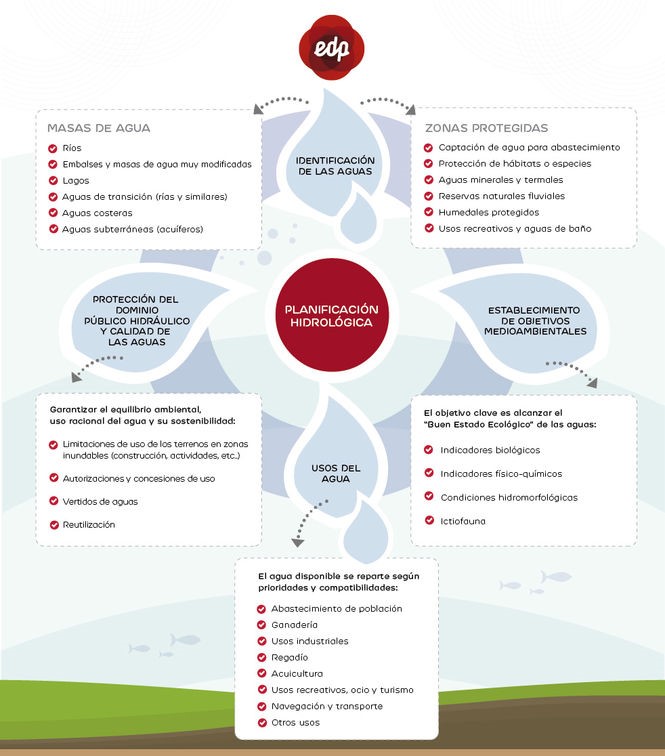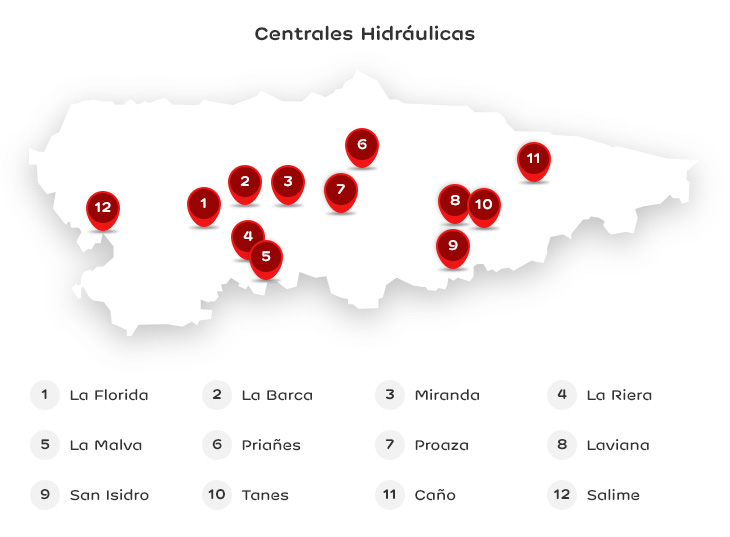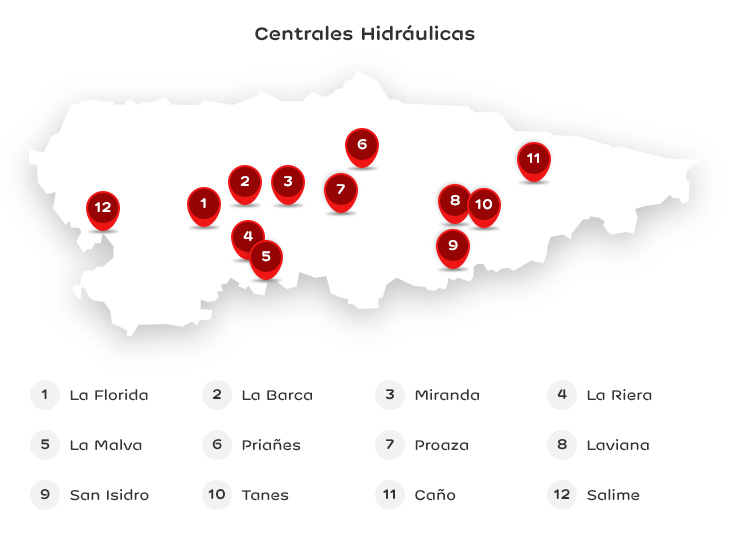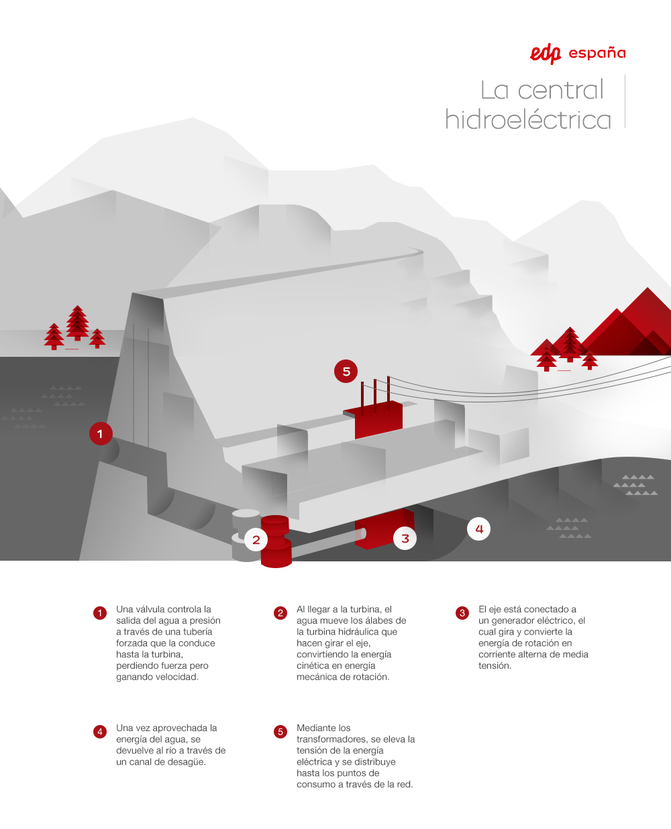Infographic
Water Cycle
Did you know that 97% of water on the planet is salty, concentrated in seas and oceans?

Maintaining a sustainable balance is the goal of the Water Framework Directive, adopted in 2000, which has laid the foundations for a modern, holistic and ambitious water policy for the European Union, in order to ensure sufficient quantities of good quality water in all of Europe.
The Administration guarantees the use and overall or common enjoyment of water, although there may be authorized private uses, consumptive or not, for the development of services or activities within a General Water Planning to guarantee availability of water for common and private uses.
The competent authorities establish different control systems at different stages of water use, controlling both uptake and the use and consumption, or contamination caused by discharges and the impact on the quality of the environment.
Water planning
Through the incorporation into our legal system of the Water Framework Directive (WFD), a new approach was assumed in hydrological planning, including aspects of demand and satisfaction, and environmental objectives to achieve “good ecological status” of the waters.
Water elements:
Rivers
Reservoirs and water bodies heavily modified
Lakes
Transitional waters (small rivers and others)
Coastal Waters
Groundwater (aquifers)
Protected areas
Water capture for supply purposes
Habitats or species protection
Mineral and thermal waters
Natural river reservations
Protected wetlands
Recreational uses and bathing water
Ensure the environmental balance, rational use of water and its sustainability
Limitations of land use in flood areas (construction, activities etc.)
Use authorizations and concessions
Water spills
Reuse
The key objective is to safeguard the “Good Ecological Status” of water:
Biological indicators
Physicochemical indicators
Hydro-morphological conditions
Ichthyofauna
The available water is distributed according to priorities and compatibilities:
Supply of population
Livestock sector
Industrial Uses
Irrigation
Aquaculture
Recreational uses, leisure and tourism
Navigation and Transport
Other uses
De este modo, los Planes Hidrológicos de Cuenca buscan proteger el dominio público y las aguas, en equilibrio con su uso sostenible y base para el desarrollo regional y sectorial.
Los planes hidrológicos son la herramienta fundamental para la gestión del agua, al permitir el equilibrio entre la consecución de los objetivos ambientales y los objetivos de atención a las demandas.
La planificación hidrológica se plantea como un proceso iterativo que se desarrolla cada 6 años. El primer ciclo de planificación cubrió los años 2009-2015, y, actualmente, acaban de aprobarse los Planes Hidrológicos correspondientes al segundo ciclo de planificación, 2016-2021. Los contenidos de los Planes incluyen la definición de las masas de agua, criterios de prioridad y compatibilidad de usos, regímenes de caudales ecológicos y otros requerimientos ambientales, asignación y reserva de recursos, zonas protegidas y régimen de protección, objetivos medioambientales y medidas de protección de las masas de agua.
Se entiende por caudal ecológico al caudal que contribuye a alcanzar el buen estado o buen potencial ecológico en los ríos o en las aguas de transición y mantiene, como mínimo, la vida piscícola que de manera natural habitaría o pudiera habitar en el río, así como su vegetación de ribera.

Water is an inexhaustible source of renewable energy with a large electric potential. However, according to data of the Institute for Energy Diversification and Saving (IEDS), only 20% of the world’s electricity comes from this source of energy, a number that has increased by 33% in developed countries and decreased 8% in the third world, according to UNESCO information.
Still, it is the most commonly used renewable energy source on the planet. Currently, Canada, the United States and China are the largest producers of the world. In Europe, Spain ranks third in terms of hydroelectric power installed, surpassed only by Italy and France; and its hydroelectricity park represents 10% of park of the member states of the European Union.
Given the national orography and the existence of numerous dams, Spain has a long hydroelectric tradition, representing 17% of the total national electricity production in 2017 (Balance REE).
EDP Spain maintains a close relationship with water management since its inception, the founding of the company in electric business goes back to 1920 when the company Saltos de Agua de Somiedo was established.
Currently, EDP Spain operates 11 of its own hydroelectric plants and has a 50% share in the Community of Assets that operates the Hydraulic power plant of Salime, all of them located in Asturias.
Given the high degree of environmental protection developed in the Asturias, many of the plants and production facilities of EDP in Spain are located in natural areas with some degree of protection.
In this way, all the CCHH have Environmental Surveillance Plans that ensure that all applicable environmental requirements and especially the existing licenses, permits and authorizations are met, which is reflected by the implementation of the System of Environmental Management according to the ISO 14001 standard already achieved in the year 2008.


In any case, the operating rules and the quantity of water which can be used in a jump is regulated in the Concessions of hydraulic use, and in the case of the central hydraulic in EDP Spain, this acquisition does not affect any water body in a significant manner.
Also, concessions or agreements with the Cantábrico Hydrographic Confederation define the so-called ecological flow, which is necessary water to preserve the ecological values of the channel, presenting all the tributary rivers and receivers values of ecological and appropriate physicochemical indicators, which validate the compatibility plants with habitats and ecosystems in which they are located.
Benefits of Hydropower
Text: One of the greatest benefits of hydroelectric power stations is that they do not require fossil fuels (gas, coal or fuel) to generate electricity. They only depend on the water flow, subject to availability of rainfall during the year (wet year vs dry year, as pluviometry and climatological parameters), where long periods of environmental dryness and elevated temperatures limit the access to resource for both industrial and energetic activity (production in hydraulic plants and cooling potential thermal plants) and for agricultural and domestic uses.
In addition, the environmental impact is drastically reduced by not emitting polluting gases, which helps to mitigate the effects of climate change. The service life of water infrastructure is very long, but it can be highly variable depending on the type of dam and construction or depending on environmental variables such as erosion and sediment accumulation, yet it has made hydropower one of the most used renewable resources today. According to Spanish law, the grants are currently up to 75 years, and they are extended under certain circumstances.
The hydroelectric power plants are characterized by low operating costs, which, along with fuel savings, make this type of energy an excellent way to reduce external energy dependence, a relevant aspect in the case of Spain, which, in 2013, imported 72% of primary energy.

Other production centers with large water consumption are the thermal power plants, based both in Coal and gas combined cycle.
EDP Spain has the following facilities of this type:
- Coal Thermal Power Plant and Combined Cycle Power Plant of Soto de Ribera: by a community of users, both plants have water for cooling and units for the production of demineralized water of the water-steam cycle through a capture of surface water in the Nalón river, authorized by Cantábrico Hydrological Confederation.
- Thermal Power Plant Aboño: has a collection of seawater in the facilities of El Musel, duly authorized by the Authority Port of Gijón.
- Combined Cycle Power Plant Castejón: has a surface uptake in the Ebro river, authorized by the Ebro Hydrographic Confederation, and an emergency raft, which allows the operation in periods of severe drought without new contributions, ensuring the availability downstream for irrigation and consumption.
Most of this water, except for small amounts lost in evaporative cooling towers, is returned to the original environment in physical and chemical conditions that will not affect it and allow its reuse by downstream users. The main impact of this spill is a possible increase in the temperature of the river, an effect which mitigates cooling towers where water is cooled in contact with air, generating a striking water vapor column.
The remaining industrial waters of these plants are discharged after corresponding treatment in an effluent plant, which ensures compliance with the parameters set in each of the existing discharge authorizations and the maintenance of the quality of the receiving environment.
Because of this, the good state of water bodies would not need the conclusion of new ecological flows, although the new Water Planning subjects some of them to review, which is a restriction subject to environmental cost-benefit analysis taking into account the fundamental nature of hydropower to ensure the power supply and its quality.